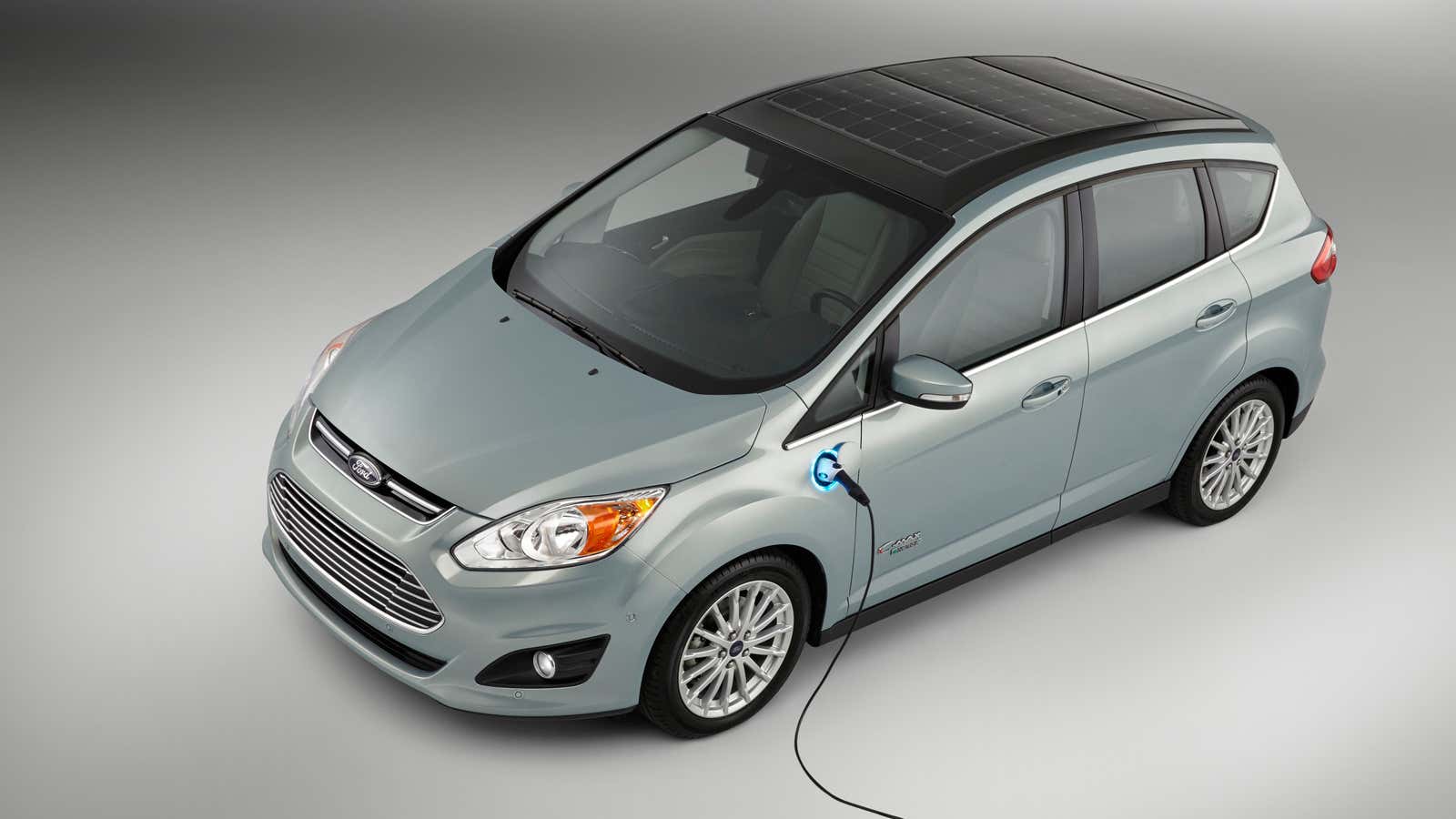If electric cars are bad news for the oil industry, solar-powered electric cars are bad for utility executives. Take the C-MAX Solar Energi Concept that Ford unveiled today. The version of the automaker’s popular plug-in electric hybrid hatchback is equipped with 1.5 square meters (16 square feet) of photovoltaic panels that charge the vehicle’s lithium-ion battery pack. No fossil fuel power plants needed.
The panels, made by Silicon Valley solar manufacturer SunPower, however, don’t generate enough electricity to fully charge the C-Max’s battery within a day. So the Georgia Institute of Technology developed a solar canopy featuring a roof made of Fresnel lenses that concentrate the sun on the panels to boost power production. A driver parks the C-Max under the canopy and during the day the car autonomously moves several feet to track the sun to maximize electricity generation. Ford estimates it will take six to seven hours to fully charge the battery, which has a range of 21 miles. (The car has a gasoline-powered engine that kicks in when the battery is drained.)
“It could be for the home, corporate campuses or developing countries where there is no grid,” Mike Tinskey, Ford’s director of global vehicle electrification and infrastructure, told Quartz.
Tinskey says Ford will spend 2014 testing the concept to prove that it could work in full-scale production. So far Ford has built a prototype C-Max solar hybrid and partially charged the car with Fresnel lenses.
Still, the advent of a solar hybrid electric car is the latest sign that the convergence of battery technology and photovoltaics is threatening the century-old business model of the electric utility industry. Silicon Valley solar installer SolarCity, for instance, is offering some homeowners lithium-ion battery packs made by Tesla Motors to store electricity generated by their solar panels. That lets homeowners tap solar electricity at night or when utility rates are high. Last month, SolarCity began offering Tesla battery packs to retailers and other businesses that want to pull the plug on their local utility when power rates spike. Another Silicon Valley company, Stem, offers a similar system albeit without the solar panels.
And owners of Tesla’s Model S electric sports sedan can top off their batteries at solar-powered fast chargers that the company is installing on highways across the US. The high-end model boasts an 85-kilowatt-hour lithium-ion battery pack that stores nearly 20 times the electricity of the typical home solar array. In the near future, homeowners might be able to tap that energy to power their homes during electricity outages or instead of relying on the grid.
Tinskey notes that the sun could fuel about 75% of the daily trips typically made by a Ford C-Max driver. “In our mind, this is something we think is going to be a really cool thing for the next generation of plug-in electric hybrids,” he says.
